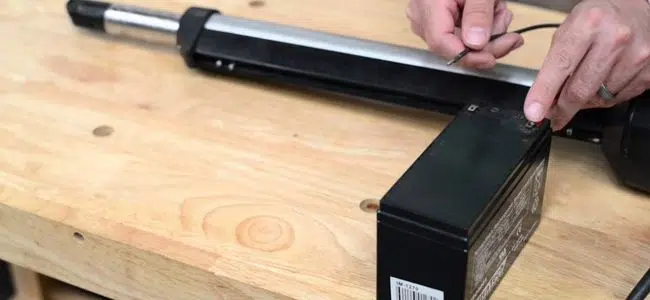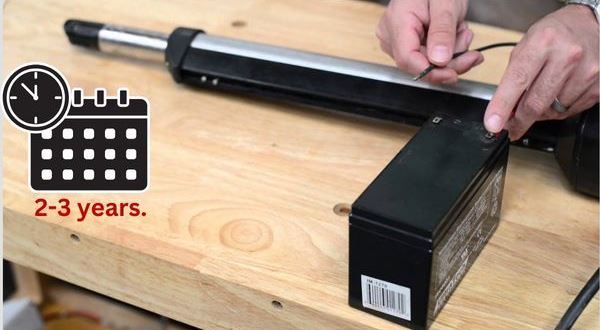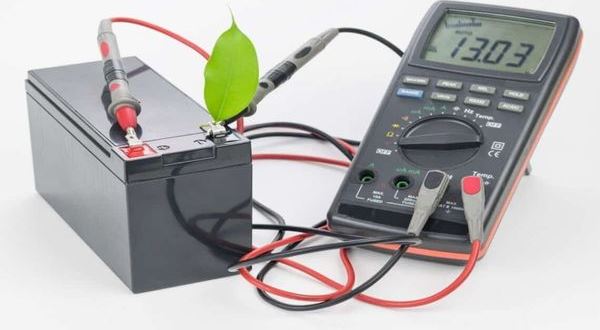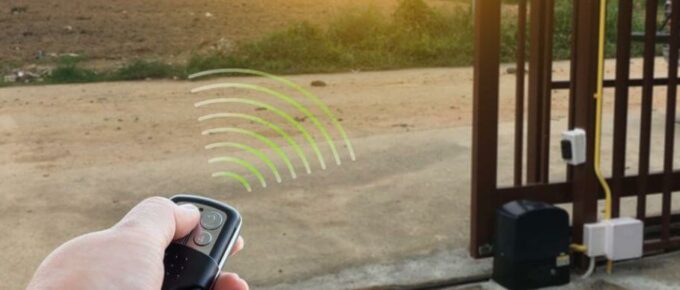The batteries used in gate openers are similar to those used in automobiles. Their use determines the lifespan of these batteries. Customers arrive to discover their gates partially open in rare circumstances due to a dead battery.
Lack of regular maintenance, weather, and the recharge voltage is some elements that impact the cell’s longevity. Isn’t it helpful to know how long a gate opener battery will survive before being replaced?
Their use determines the lifespan of these batteries. Lack of regular maintenance, weather, and the recharge voltage are some elements that impact the cell’s longevity.
Testing The Battery Of A Gate Opener
Quick Navigation

When your automated driveway gate opener’s batteries have read cells or are growing old, they may read fine (13.5-13.8 VDC) at rest but won’t work under load.
To test it under load, keep the battery completely inserted in the automated gate opener system, connected to both the incoming power supply and the automatic gate opener arm.
The positive and negative voltmeter leads should be placed on the positive and negative battery spades. Then go through a cycle with your automated driveway gate opener to check what voltage the battery lowers. A healthy, fully charged battery should not lose more than a volt.
- The two motor wires must be disconnected from the controller (PC board). The motor cables are typically thick and black or blue; however, any color can be used.
- The ‘MOTOR’ or ‘MTR’ terminals on the controller are where the motor wires are linked. Disconnect the charger from the controller or turn off the main supply.
- The charger in CENTURION gate motors is usually located directly opposite the battery and is black or greyish-green in color.
- The “charging voltage” was removed to ensure that the voltage read from the battery was not skewed.
- Turn on your gate motor. Connect the motor wires to the battery connections directly. It doesn’t matter which battery you attach to which color wire.
- When dealing with a malfunctioning battery, it’s a good idea to check the charging voltage.
- Connect the charger or re-energize the mains, but detach the controller’s battery (thick black and red) wires. Measure the distance between the two controller terminals where the battery would ordinarily be attached.
If you’re unsatisfied with the results you can choose the best from some pretested automatic gate openers.
How Long Does A Gate Opener Battery Last?

The longevity of a gate opener battery is determined by how much you use it. It can often withstand roughly 250 cycles.
So, why are you interested in knowing this? The gate opener battery is similar to that of a vehicle battery. You never know when it will latch onto you.
We feel that most individuals would not appreciate arriving home to discover their gat half-opened.
As a result, it’s critical to understand how long your gate opener battery can endure. On the other hand, the lifespan of a gate opener battery is determined by a few things.
Furthermore, a few tactics and ideas might help you increase the life of your gate opener batteries.
Many customers have stated that it lasts longer when the battery is used with a solar panel. Usually, the battery in a gate opener lasts around 2-3 years.
It will also endure for a few more months owing to the solar panel. In the best-case scenario, it may persist for four years.
However, if you don’t open and close your battery often, solar panels can help it last even longer. If you set your gate opener to wireless control and give the remote to a child, it won’t survive long.
Testing A Gate Motor Battery With A Multimeter?

Almost all portable gadgets provide DC power (Direct current). It is safe to use a digital voltmeter to measure DC.
However, it would help if you exercise caution while employing AC since it is difficult to gauge. You may use a multimeter to examine a battery’s potential difference, which will tell you if the battery is good or not.
To test a battery using a multimeter, follow the instructions below:
- First, on the DC side, the multimeter’s range should be adjusted to 20V. This is the best range for monitoring batteries with less than 20V.
- The meter will display ‘1’ if the range is less than the battery voltage. Then attach the black probe of the multimeter to the negative terminal of the battery and the red probe to the positive terminal of the battery.
- If this is adjusted appropriately, the multimeter’s display will show the voltage as a positive number.
- On the other hand, the display will show a negative number if the opposite terminals are linked.
- The voltage will be visible as soon as the probes hit the terminal. When using a standard AA battery, the measurement will be around 1.5V.
- This indicates that the battery is in good working order.
Final Talk
A decent battery for gate openers is critical since the gate’s functioning depends on how much power these batteries can provide.
The batteries might be depleted if the gates are used frequently. Leakage and spillage are other hazards associated with batteries.
Avoiding leakage and spillage becomes the most vital attribute of a battery. As a result, selecting a battery that can be recharged, reused, and has a longer lifespan while resisting damage becomes critical.







Leave a Reply